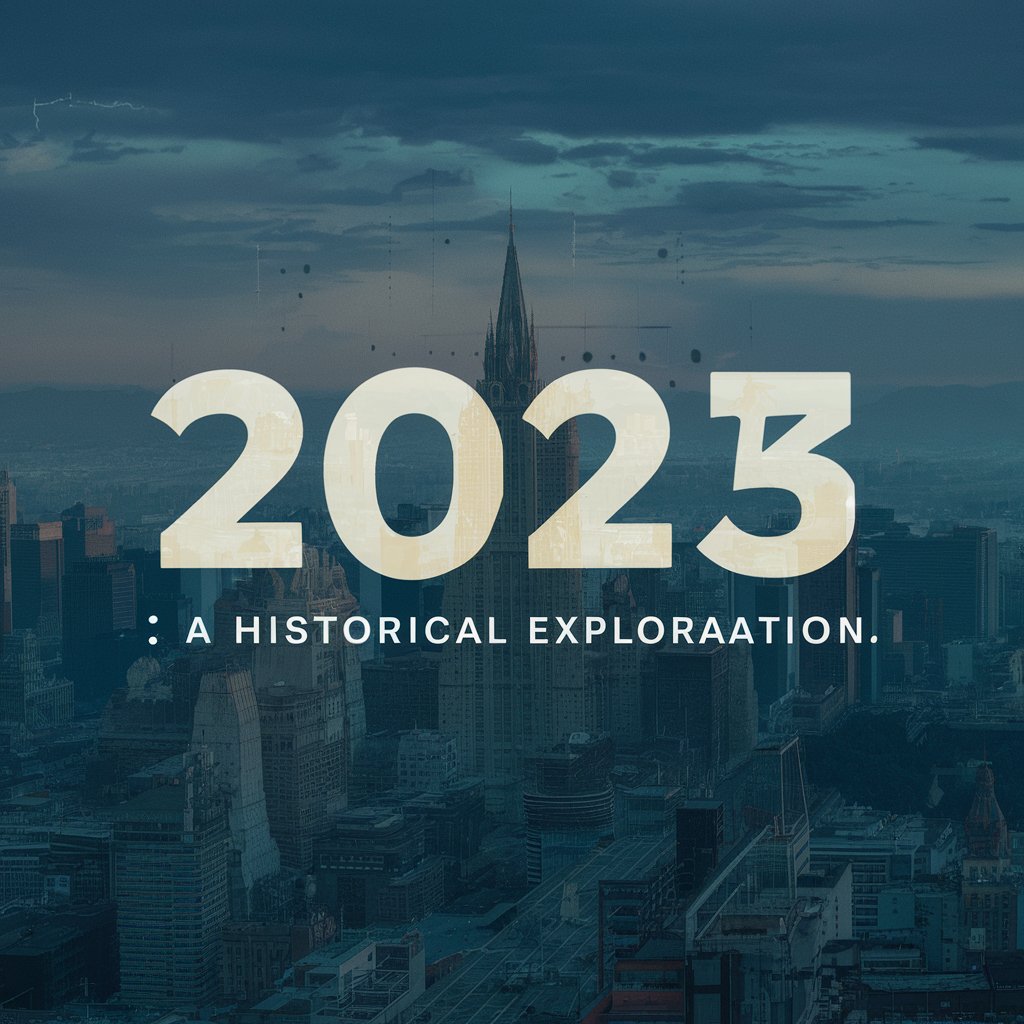Step into the time machine as we journey back to the transformative years of 2023-1954, a period marked by unparalleled change and innovation. From the post-war Renaissance to technological leaps, this era laid the foundation for the modern world we know today. Join us on this historical exploration to uncover the political intrigue, cultural revolutions, and societal shifts that shaped our past and continue to influence our future.
Political and Social Climate of 2023-1954
The political and social climate of 2023-1954 was marked by significant global upheaval and transformation. In the aftermath of World War II, nations were grappling with rebuilding their societies while navigating complex geopolitical tensions.
The emergence of superpowers like the USA and USSR set the stage for a new era of power dynamics, leading to the birth of organizations such as the United Nations aimed at promoting international cooperation and peace.
Decolonization movements swept across various regions, leading to the formation of new nations eager to assert their independence on the world stage. Meanwhile, technological advancements were rapidly accelerating, shaping industries and societies in profound ways.
As civil rights movements gained momentum, challenging systemic discrimination and inequality, society experienced a period of social unrest amid rapid change. The Cold War further intensified geopolitical rivalries, culminating in conflicts like the Korean War and the Vietnam War that left lasting impacts on global politics.
Major Events and Milestones
The period of 2023-1954 was marked by significant events and milestones that shaped the course of history. From the end of World War II to the height of the Cold War, this era saw global transformations on political, social, and technological fronts.
One major event during this time was the establishment of the United Nations in 1945, aimed at promoting international cooperation and preventing future conflicts. This organization played a crucial role in maintaining peace and security on a global scale.
Another milestone was the dawn of decolonization, as many nations gained independence from colonial powers. This shift reshaped geopolitical dynamics and paved the way for new nation-states to emerge onto the world stage.
Technological advancements also flourished during this era, with breakthroughs like space exploration capturing imaginations worldwide. The Space Race between superpowers fueled innovation and led to remarkable achievements in science and technology.
These major events and milestones set the stage for a rapidly changing world order that continues to influence our present-day society.
Fashion and Pop Culture during this Era
Fashion and pop culture during the 2023-1954 era were a vibrant reflection of the changing times. The 1950s saw the rise of iconic styles like poodle skirts, leather jackets, and cat-eye glasses – epitomizing post-war optimism.
In contrast, the 1980s brought bold colors, shoulder pads, and neon everything – a true testament to excess and individuality. Musical icons like Elvis Presley in the ’50s and Michael Jackson in the ’80s not only shaped music but also influenced fashion trends globally.
Movies played a significant role as well, with Marilyn Monroe’s glamorous looks defining Hollywood chic while characters like Marty McFly from “Back to the Future” became synonymous with ’80s cool. Pop culture icons such as Audrey Hepburn in “Breakfast at Tiffany’s” embodied sophistication and elegance that transcended time.
From swing dances to breakdancing, each decade had its own distinctive flair that continues to inspire contemporary fashion designers today. Whether you’re channeling retro vibes or embracing modern minimalism, these past eras have left an indelible mark on our sartorial choices.
Technological Advancements
Technology advancements during the 2023-1954 era were groundbreaking. The development of nuclear power and the creation of the first atomic bombs changed the course of history, leading to a new age of warfare and international relations.
The invention of television revolutionized how people consumed information and entertainment, bringing the world into living rooms across the globe. Additionally, the transistor was invented in 1947, paving the way for modern electronics and eventually leading to today’s smartphones and computers.
Space exploration also saw significant progress during this time with milestones like Sputnik in 1957 marking humanity’s entry into the space age. These technological leaps not only shaped society at that time but laid a foundation for further innovations in the decades to come.
Impact on Society Today
The impact of the era from 1954 to 2023 continues to resonate in society today. The advancements in technology, such as the personal computer revolution and the rise of the internet, have transformed how we live, work, and communicate. These innovations have connected people on a global scale like never before.
The geopolitical tensions and events that unfolded during this period still influence international relations and shape political dynamics across the world. The legacy of decolonization and the formation of new nations has had lasting effects on cultural diversity and global cooperation.
Furthermore, movements for civil rights and social justice that emerged during this time continue to inspire activism and advocacy for equality in modern society. The lessons learned from past challenges serve as a reminder of the importance of unity, empathy, and progress toward a better future for all.
The Post-War Landscape (1945-1954)
The Post-War Landscape (1945-1954) was a time of rebuilding and recovery after the devastation of World War II. Countries around the world were faced with the monumental task of reconstructing their societies, economies, and infrastructure. The aftermath of the war left scars that would shape global politics for decades to come.
In this period, the United States emerged as a superpower, showcasing its economic might through initiatives like the Marshall Plan aimed at aiding war-torn nations in Europe. Meanwhile, the Soviet Union expanded its influence in Eastern Europe, setting the stage for geopolitical tensions that would define much of the Cold War era.
The birth of organizations like the United Nations signaled a new era of international cooperation and diplomacy. Efforts were made to prevent future conflicts and promote peace on a global scale. However, underlying rivalries between major powers simmered beneath the surface, leading to an uncertain and volatile period ahead.
The Aftermath of World War II
The aftermath of World War II left a profound mark on the global landscape. With cities in ruins and millions displaced, rebuilding was a monumental task. The war’s devastation led to economic struggles and political realignments as nations sought to recover and establish stability.
The Nuremberg Trials held perpetrators accountable for their actions, setting a precedent for international justice. The formation of the United Nations aimed to prevent future conflicts through diplomacy and cooperation among nations. Additionally, the Marshall Plan provided crucial aid for Europe’s reconstruction, fostering economic recovery and stability.
Amidst the rubble emerged new power dynamics with the rise of superpowers like the USA and USSR. The Cold War tensions that followed shaped global politics for decades to come as ideologies clashed and nuclear arms race escalated. This period marked a significant shift in world history that continues to impact our present-day geopolitical landscape.
The Emergence of Superpowers: USA and USSR
In the aftermath of World War II, two superpowers rose to prominence on the global stage: the United States and the Soviet Union. The USA emerged as a dominant economic and military force, while the USSR established itself as a formidable communist power.
The Cold War rivalry between these two nations shaped international relations for decades to come. Ideological differences fueled tensions, leading to proxy wars and a nuclear arms race that kept the world on edge.
The USA championed democracy and capitalism, promoting its values through initiatives like the Marshall Plan. Meanwhile, the USSR advocated for communism and sought to expand its influence through alliances with Eastern European countries.
This power struggle defined much of 20th-century history, influencing conflicts such as the Korean War and Vietnam War. The competition between these superpowers had far-reaching implications for geopolitics, technology, and society at large.
The Birth of the United Nations
In the aftermath of World War II, world leaders came together to establish a new global organization known as the United Nations. With the aim of promoting international cooperation and preventing future conflicts, the UN was founded on October 24, 1945. Its headquarters in New York City serves as a symbol of unity among nations.
The United Nations Charter outlined principles for maintaining peace and security worldwide. Through its General Assembly and Security Council, member states work towards resolving disputes diplomatically. The UN also plays a crucial role in humanitarian efforts, providing aid to regions affected by conflict or natural disasters.
Over the years, the United Nations has expanded its focus to include sustainable development goals, human rights advocacy, and environmental protection initiatives. Despite challenges and criticisms, the UN remains an essential forum for addressing global issues collectively.
As we reflect on the birth of this monumental institution during the period of 2023-1954, we recognize its ongoing importance in shaping our interconnected world today.
The Rise of the Modern World (1954-1970)
After the turbulent years of World War II, the world saw a transformation in the period from 1954 to 1970. This era marked a significant shift towards decolonization and the formation of new nations across Asia and Africa. The dismantling of colonial empires led to independence movements gaining momentum, reshaping global politics.
Meanwhile, the Space Race captured the imagination of people worldwide as nations raced to explore outer space and push scientific boundaries. Technological advancements during this time laid the foundation for future innovations that would revolutionize various industries.
The Civil Rights Movement in America brought about social upheaval and pushed for equality and justice for all citizens. It sparked important conversations on race relations and paved the way for legislative changes that aimed to ensure civil rights for minority groups.
Geopolitical tensions continued to simmer during this period, with confrontations between superpowers shaping global dynamics. The world was witnessing rapid changes that set the stage for further developments in the decades to come.
Decolonization and the Formation of New Nations
As the world emerged from the aftermath of World War II, a wave of decolonization swept across continents. Former colonies sought independence and self-governance, shaping the geopolitical landscape of the 20th century. Africa, Asia, and the Middle East witnessed the birth of new nations as they broke free from imperial rule.
The process was tumultuous, marked by struggles for power and identity. Nationalist movements rallied for liberation, challenging centuries-old colonial structures. Leaders like Gandhi in India and Nkrumah in Ghana became symbols of resistance against oppression.
Amidst this transformation, newly formed nations faced challenges in establishing governance systems and national identities. Borders were redrawn, cultures clashed, and ideologies diverged as diverse populations navigated their path towards sovereignty.
Decolonization not only reshaped political boundaries but also ignited debates on cultural heritage and social equality. The legacy of this era continues to influence global relations and shape contemporary issues surrounding post-colonial identity politics.
The Space Race and Technological Advancements
The Space Race of 2023-1954 was a transformative period in history, marked by intense competition between the United States and the Soviet Union to dominate space exploration.
Both superpowers raced to achieve milestones like sending the first artificial satellite, Sputnik, into orbit and landing humans on the moon.
Technological advancements during this era revolutionized aerospace engineering and paved the way for modern space travel.
Innovation flourished as scientists and engineers pushed boundaries to develop spacecraft capable of venturing beyond Earth’s atmosphere.
The successful launches of Yuri Gagarin and Neil Armstrong into space captured global attention, inspiring generations to dream of reaching for the stars.
The Civil Rights Movement and Social Upheaval
The Civil Rights Movement of the 1950s and 1960s was a pivotal moment in American history. It marked a turning point in the fight for racial equality and social justice. Led by influential figures like Martin Luther King Jr., Rosa Parks, and Malcolm X, the movement challenged segregation and discrimination across the United States.
Protests, marches, and acts of civil disobedience brought attention to systemic racism and sparked nationwide conversations about equality. The landmark Supreme Court decision in Brown v. Board of Education in 1954 declared segregated schools unconstitutional, laying the groundwork for future desegregation efforts.
Despite facing violence and opposition, civil rights activists persisted in their quest for justice. Their bravery and determination eventually led to legislative victories such as the Civil Rights Act of 1964 outlawing discrimination based on race, color, religion, sex or national origin.
The impact of the Civil Rights Movement continues to resonate today as society grapples with ongoing challenges related to racial inequality and social injustice.
Geopolitical Tensions and the Cold War (1954-1989)
The period from 1954 to 1989 was marked by intense geopolitical tensions and the infamous Cold War between the United States and the Soviet Union. This ideological conflict shaped global politics, with each superpower vying for influence and power.
Tensions escalated with events like the Cuban Missile Crisis, where the world stood on the brink of nuclear war. Proxy wars in Korea and Vietnam further fueled this icy standoff, as both sides sought to expand their spheres of influence.
The construction of the Berlin Wall symbolized the physical division between East and West, highlighting the deep-seated mistrust and rivalry that defined this era. The arms race reached unprecedented levels as both nations raced to develop more advanced weapons technology.
Despite these tensions, efforts were made towards detente in the late 1970s, leading to improved diplomatic relations between East and West. However, it wasn’t until 1989 when political changes in Eastern Europe ultimately brought an end to this chapter of history.
The Korean War and the Vietnam War
Korean War and the Vietnam War were pivotal conflicts that shaped the geopolitical landscape of the 20th century. The Korean War, fought between North Korea supported by China and the Soviet Union, and South Korea backed by the United Nations led by the US, resulted in a stalemate with an armistice signed in 1953.
On the other hand, the Vietnam War was a prolonged and divisive conflict between North Vietnam communist forces supported by China and Russia, against South Vietnam allied with the US. It lasted for nearly two decades until North Vietnamese forces captured Saigon in 1975.
Both wars left deep scars on their respective countries and populations, leading to significant loss of life and social upheaval. The legacies of these wars continue to resonate today in terms of political ideologies and regional dynamics.
The Cuban Missile Crisis and Nuclear Proliferation
As tensions between the United States and the Soviet Union escalated, the world held its breath during the Cuban Missile Crisis. In 1962, the discovery of Soviet nuclear missiles in Cuba brought the two superpowers to the brink of nuclear war. President Kennedy’s strategic handling of the situation averted disaster, showcasing diplomacy under pressure.
The Cuban Missile Crisis highlighted the dangers of nuclear proliferation and emphasized the need for arms control agreements. The standoff underscored how close humanity came to catastrophic conflict and spurred efforts to prevent such crises in the future.
The event serves as a stark reminder that even small miscalculations or misunderstandings can have monumental consequences in international relations. It remains a pivotal moment in history that continues to shape global security discussions today.
The Fall of the Berlin Wall and the End of the Cold War
The fall of the Berlin Wall in 1989 marked a pivotal moment in history, symbolizing the end of an era defined by ideological division and geopolitical tension. The crumbling of this physical barrier not only reunited families and friends separated for decades but also signified the collapse of communism in Eastern Europe.
As East and West Germany embraced reunification, it was a testament to the power of unity over division. The Cold War, characterized by proxy conflicts and nuclear standoffs between superpowers, came to an abrupt end with the dismantling of the wall that had stood as a stark symbol of oppression.
The events surrounding the fall of the Berlin Wall served as a catalyst for sweeping political changes across Europe and beyond. It paved the way for greater cooperation between former adversaries, ushering in a new era of diplomacy and collaboration on a global scale.
Globalization and the Information Age (1970-2023)
Globalization and the Information Age, spanning from 1970 to 2023, have reshaped the world in profound ways. The rapid advancement of technology has connected people across continents like never before. The rise of the internet has revolutionized how we communicate, work, and access information.
Businesses now operate on a global scale, with supply chains stretching around the world. This interconnectedness has led to increased cultural exchange and economic opportunities. However, it has also raised concerns about data privacy and security.
The information age has democratized knowledge, making education more accessible through online learning platforms. Social media platforms have transformed how we interact and share ideas globally. As we move further into the 21st century, navigating the complexities of globalization will be crucial for shaping a sustainable future for all.
The Personal Computer Revolution
The personal computer revolution of 2023-1954 marked a monumental shift in how society interacted with technology. From massive mainframes to sleek laptops, the evolution was rapid and transformative.
Individuals could now have computing power at their fingertips, changing the way we work, communicate, and access information. The rise of companies like Apple and Microsoft played a crucial role in popularizing personal computers for everyday use.
With the internet boom in the late 20th century, PCs became essential tools for connecting globally and accessing vast amounts of knowledge. The concept of virtual communities and online collaboration blossomed alongside this technological advancement.
Today, we can’t imagine our lives without personal computers – from staying connected through social media to working remotely during unprecedented times. As technology continues to advance rapidly, who knows what exciting innovations lie ahead in the realm of personal computing?
The Rise of the Internet and Digital Communication
In the late 20th century, a revolutionary transformation took place that would forever change how we communicate and interact with the world. The rise of the Internet brought about unprecedented connectivity, allowing people to connect across vast distances in an instant.
Digital communication platforms such as email, instant messaging, and social media emerged, reshaping how information is shared and relationships are formed. The world has become more interconnected than ever before, bridging cultures and transcending borders.
With the advent of search engines like Google and online encyclopedias like Wikipedia, knowledge became readily accessible at our fingertips. This accessibility revolutionized education and research, empowering individuals with a wealth of information previously unimaginable.
As technology continued to advance, mobile devices made accessing the Internet even more convenient. Today, smartphones have become ubiquitous tools for staying connected and informed on-the-go. The evolution of digital communication has truly transformed the way we live our lives in ways that continue to unfold every day.
Economic Globalization and Interdependence
In the realm of economic globalization, the world has become more interconnected than ever before. Nations are no longer isolated entities but rather intricate pieces in a global puzzle where actions in one corner can ripple across continents.
Trade agreements and multinational corporations play a pivotal role in shaping this landscape, fostering interdependence among countries. Supply chains stretch across borders, creating a web of reliance that transcends national boundaries.
The flow of goods, services, capital, and information knows no bounds in this era of globalization. What happens in one economy can have far-reaching consequences on others, highlighting the need for cooperation and collaboration on an international scale.
While economic globalization has led to increased prosperity for many nations, it has also exposed vulnerabilities. Financial crises or disruptions in one region can trigger chain reactions that impact economies worldwide.
Navigating the complexities of economic interdependence requires adaptability and foresight as we move forward into an increasingly intertwined global economy.
Challenges and Opportunities of the 21st Century (2000-2023)
The 21st century has brought forth a myriad of challenges and opportunities that continue to shape our world. With the rise of technology, globalization, and interconnectedness, new possibilities have emerged alongside complex issues. From the war on terror to climate change, society grapples with pressing concerns that demand innovative solutions.
Advancements in science, medicine, and technology offer promising prospects for improving the quality of life and addressing global health crises. However, ethical dilemmas arise as we navigate the implications of artificial intelligence and genetic engineering. A delicate balance must be struck between progress and preserving humanity’s values.
Climate change looms large as a defining challenge of our era, calling for sustainable practices and environmental stewardship. As countries work towards carbon neutrality and renewable energy sources become more prevalent, there is hope for a greener future.
Navigating geopolitical shifts while fostering cooperation across borders presents both obstacles and chances for diplomacy to prevail over conflict. The dynamic landscape of the 21st century requires adaptability and resilience in facing uncertainties yet unseen.
The War on Terror and Geopolitical Shifts
The early 21st century saw a significant shift in global politics with the onset of the War on Terror. Following the tragic events of September 11, 2001, the United States led a coalition to combat terrorism worldwide.
This war marked a new era of asymmetric warfare, where non-state actors posed threats to traditional nation-states. The invasion of Afghanistan and Iraq reshaped geopolitical alliances and sparked debates on interventionism versus sovereignty.
The War on Terror had far-reaching consequences, influencing domestic policies, international relations, and military strategies. It also brought attention to issues like human rights abuses, drone warfare, and cybersecurity concerns.
Geopolitical shifts were evident as new power dynamics emerged in regions like the Middle East and South Asia. The fight against terrorism became a central focus for many nations as they navigated complex security challenges in an interconnected world.
Climate Change and Sustainability Efforts
Climate change is a pressing issue that has been gaining more attention in recent years. The impact of human activities on the environment has led to rising global temperatures, extreme weather events, and melting ice caps.
Sustainability efforts have become increasingly important as individuals, communities, and governments work towards reducing carbon emissions, promoting renewable energy sources, and preserving natural resources for future generations.
Many businesses are also taking steps to implement sustainable practices in their operations by reducing waste, using eco-friendly materials, and investing in green technologies.
Educating the public about the importance of sustainability and encouraging small changes in daily habits can make a significant difference in combating climate change and protecting our planet for years to come.
Advancements in Science, Medicine and Technology
The period of 2023-1954 witnessed remarkable advancements in science, medicine, and technology that have shaped the world we live in today. From groundbreaking discoveries to revolutionary inventions, this era marked a significant leap forward in human progress.
In the field of science, notable achievements were made in understanding the structure of DNA, leading to major breakthroughs in genetics and biotechnology. Scientists also delved into space exploration, with the launch of Sputnik by the Soviet Union marking the beginning of the Space Age.
In medicine, developments like the discovery of antibiotics revolutionized healthcare by combating infectious diseases. The introduction of vaccines for polio and other illnesses brought about a dramatic decrease in mortality rates worldwide.
Technological innovations during this time included the invention of transistors, paving the way for modern electronics. The first commercial computer was built, setting off a chain reaction that would eventually lead to today’s interconnected digital world.
These advancements laid a solid foundation for further progress in science, medicine, and technology well beyond 2023-1954.
Conclusion: Lessons from the Past for the Future
As we reflect on the historical period of 2023-1954, it becomes clear that the past holds valuable lessons for the future. The events and milestones of this era have shaped our present reality in profound ways. From post-war landscapes to technological advancements, each moment has contributed to where we stand today.
The emergence of superpowers and geopolitical tensions remind us of the importance of diplomacy and cooperation in a rapidly changing world. Decolonization movements teach us about self-determination and equality among nations. The civil rights struggles highlight the ongoing fight for social justice and equality.
The Cold War era underscores the dangers of nuclear proliferation and serves as a cautionary tale for global conflicts. Advancements in science and technology demonstrate the power of innovation in driving progress. Climate change challenges urge us to prioritize sustainability efforts for a better tomorrow.
In essence, looking back at history allows us to learn from our past mistakes, celebrate our achievements, and navigate toward a brighter future filled with hope, resilience, and unity.
FAQs
Q: What were the major events and milestones during the time period of 2023-1954?
A: Some of the major events and milestones during this era include World War II, the formation of the United Nations, decolonization movements, technological advancements like the Space Race, social upheavals such as the Civil Rights Movement, geopolitical tensions of the Cold War, and globalization in the Information Age.
Q: How did fashion and pop culture evolve from 2023 to 1954?
A: Fashion trends evolved from conservative styles in the post-war years to more daring and innovative designs influenced by music icons. Pop culture saw a shift towards rock ‘n’ roll music, Hollywood golden age films, and iconic television shows that left a lasting impact on society.
Q: What were some key technological advancements during this time frame?
A: The period of 2023-1954 witnessed significant technological advancements including nuclear power development, space exploration achievements like Sputnik’s launch by Russia (USSR), the introduction of television broadcasting services for mass communication,
Q: How did global geopolitics shape up in these decades?
A: Geopolitical tensions rose between superpowers USA and USSR leading to proxy wars like the Korean War & Vietnam War. The Cuban Missile Crisis heightened fears of nuclear war while decolonization movements reshaped world politics creating new nations struggling for independence.
In reflecting on the history between 2023-1954, we are reminded that our past holds valuable lessons for shaping our present and future. From post-war rebuilding efforts to social revolutions that shaped modern societies – every event has contributed to where we stand today. As we navigate through challenges like climate change or geopolitical shifts in this complex world order,
FOR FURTHER INFORMATION VISIT: buienradar.co.uk











